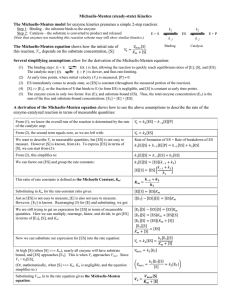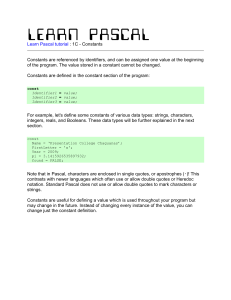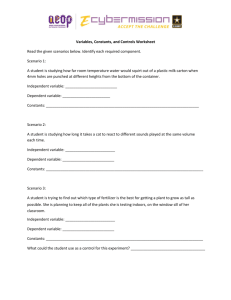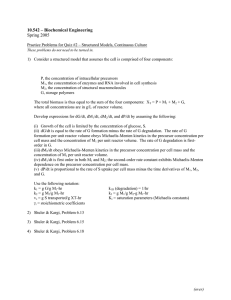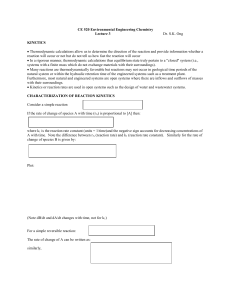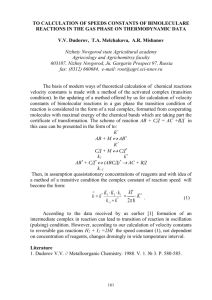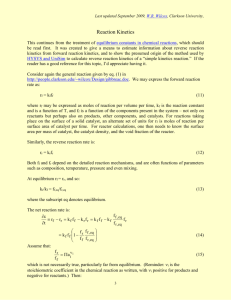This handout
advertisement
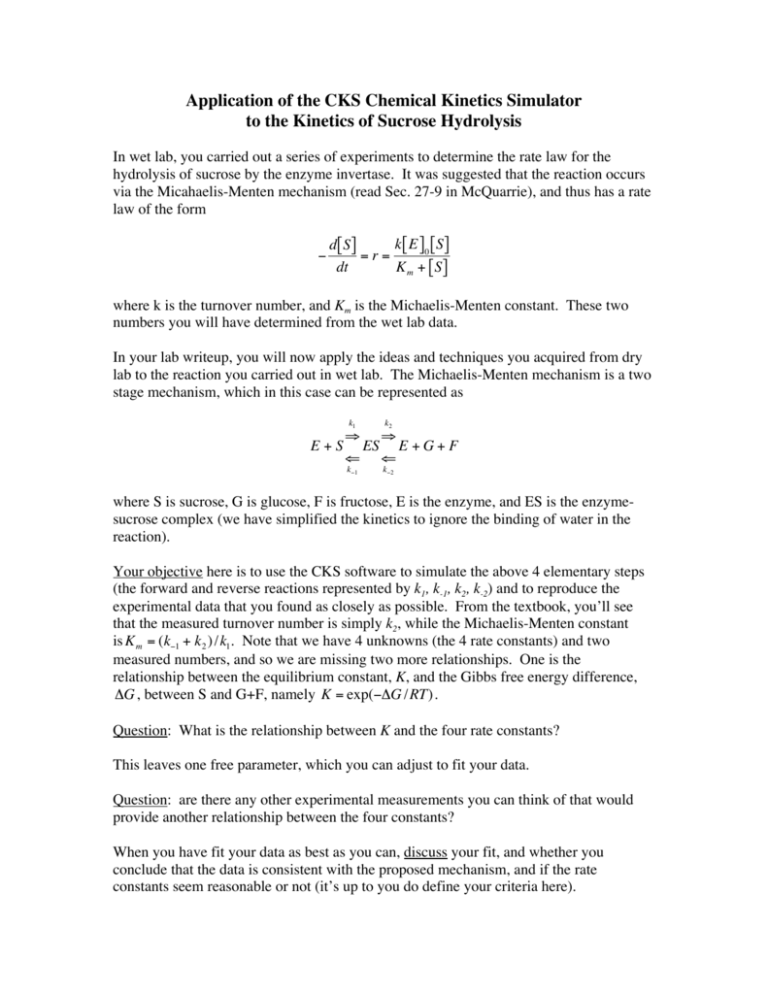
Application of the CKS Chemical Kinetics Simulator to the Kinetics of Sucrose Hydrolysis In wet lab, you carried out a series of experiments to determine the rate law for the hydrolysis of sucrose by the enzyme invertase. It was suggested that the reaction occurs via the Micahaelis-Menten mechanism (read Sec. 27-9 in McQuarrie), and thus has a rate law of the form − k [ E ] 0 [ S] d[ S] =r= dt K m + [ S] where k is the turnover number, and Km is the Michaelis-Menten constant. These two numbers you will have determined from the wet lab data. € In your lab writeup, you will now apply the ideas and techniques you acquired from dry lab to the reaction you carried out in wet lab. The Michaelis-Menten mechanism is a two stage mechanism, which in this case can be represented as k1 k2 ⇒ ⇒ E + S ES E + G + F ⇐ ⇐ k−1 k−2 where S is sucrose, G is glucose, F is fructose, E is the enzyme, and ES is the enzymesucrose complex (we have simplified the kinetics to ignore the binding of water in the € reaction). € Your objective here is to use the CKS software to simulate the above 4 elementary steps (the forward and reverse reactions represented by k1, k-1, k2, k-2) and to reproduce the experimental data that you found as closely as possible. From the textbook, you’ll see that the measured turnover number is simply k2, while the Michaelis-Menten constant is K m = (k−1 + k 2 ) /k1 . Note that we have 4 unknowns (the 4 rate constants) and two measured numbers, and so we are missing two more relationships. One is the relationship between the equilibrium constant, K, and the Gibbs free energy difference, ΔG , between S and G+F, namely K = exp(−ΔG /RT) . Question: What is the relationship between K and the four rate constants? € € This leaves one free parameter, which you can adjust to fit your data. Question: are there any other experimental measurements you can think of that would provide another relationship between the four constants? When you have fit your data as best as you can, discuss your fit, and whether you conclude that the data is consistent with the proposed mechanism, and if the rate constants seem reasonable or not (it’s up to you do define your criteria here).
